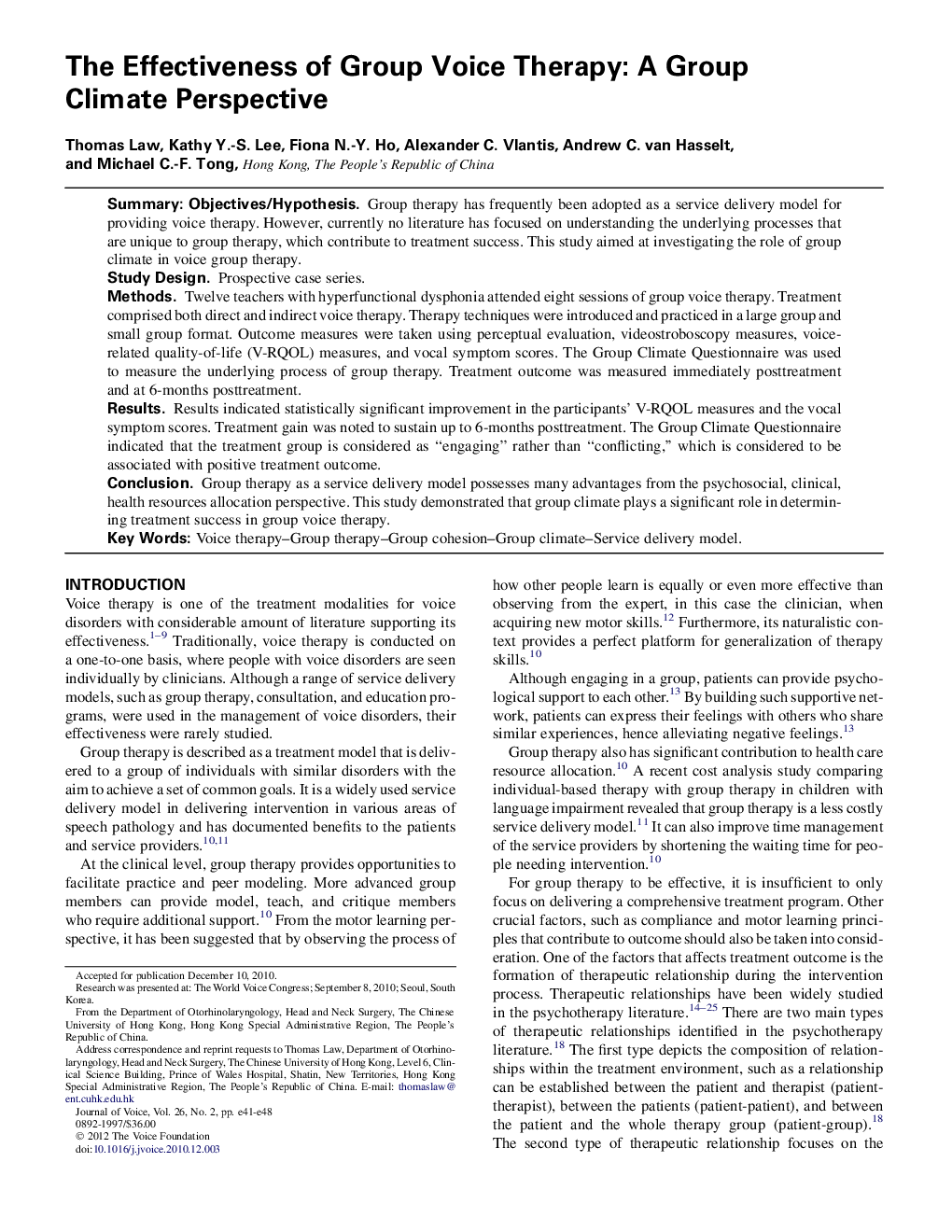| Article ID | Journal | Published Year | Pages | File Type |
|---|---|---|---|---|
| 1102280 | Journal of Voice | 2012 | 8 Pages |
SummaryObjectives/HypothesisGroup therapy has frequently been adopted as a service delivery model for providing voice therapy. However, currently no literature has focused on understanding the underlying processes that are unique to group therapy, which contribute to treatment success. This study aimed at investigating the role of group climate in voice group therapy.Study DesignProspective case series.MethodsTwelve teachers with hyperfunctional dysphonia attended eight sessions of group voice therapy. Treatment comprised both direct and indirect voice therapy. Therapy techniques were introduced and practiced in a large group and small group format. Outcome measures were taken using perceptual evaluation, videostroboscopy measures, voice-related quality-of-life (V-RQOL) measures, and vocal symptom scores. The Group Climate Questionnaire was used to measure the underlying process of group therapy. Treatment outcome was measured immediately posttreatment and at 6-months posttreatment.ResultsResults indicated statistically significant improvement in the participants’ V-RQOL measures and the vocal symptom scores. Treatment gain was noted to sustain up to 6-months posttreatment. The Group Climate Questionnaire indicated that the treatment group is considered as “engaging” rather than “conflicting,” which is considered to be associated with positive treatment outcome.ConclusionGroup therapy as a service delivery model possesses many advantages from the psychosocial, clinical, health resources allocation perspective. This study demonstrated that group climate plays a significant role in determining treatment success in group voice therapy.
